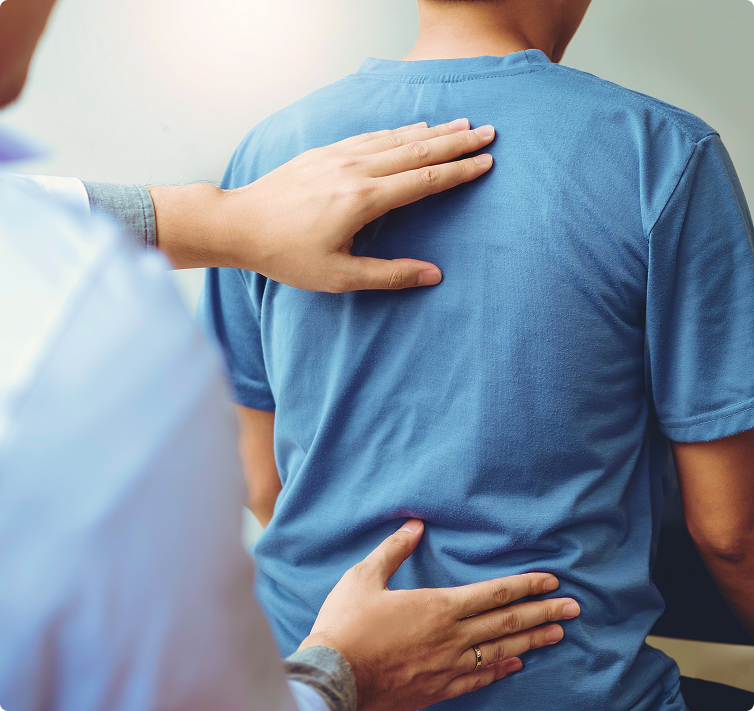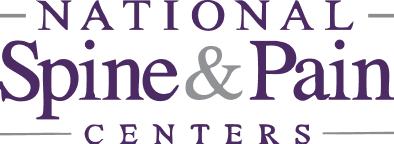Scoliosis
Scoliosis of the Spine: Causes, Symptoms, Diagnosis, and Treatments
Facts and Information About Scoliosis
- Scoliosis is a common condition, found in 2-3 % of the population, or about 6-9 million people in the United States.
- Scoliosis appears in 1-2 % of children or adolescents and more than 50% of people over 60.
- Girls and women are more likely to develop scoliosis, especially if a parent also has this condition.
- Most cases of scoliosis are mild and are corrected with simple treatments, like wearing a back brace.
Why Scoliosis Appears
People may have different causes for their scoliosis. For example, scoliosis may be something that a person is born with or it may be caused by an illness.
There are three main types of scoliosis:
- Congenital Scoliosis is a condition that some infants are born with. Infants with this type of scoliosis have an abnormal spine, even while in the womb. The backbones (vertebrae) form incorrectly, causing the spine to press on the lungs and heart, causing breathing difficulties and infections.
- Neuromuscular Scoliosis starts when a person’s nerves and muscles do not function normally. It is seen in children with cerebral palsy or people with spinal cord injuries. Inherited neuromuscular disorders like muscular dystrophy, osteogenesis imperfecta (“brittle bones”), and Marfan syndrome may also cause it.
- Idiopathic Scoliosis describes any case of scoliosis where the cause is unknown. It is the most common type of scoliosis, usually detected between the ages of 10-15. At first, there may be no symptoms. However, these persons may start to have back pain as older adults due to aging of the spinal discs and joints.
Some less common causes of scoliosis include:
- Physical trauma
- Spinal stenosis
- Bone collapse from osteoporosis
Symptoms of Scoliosis
Some common symptoms and signs of scoliosis include:
- Larger muscles on one side of the back
- Uneven hips
- Different leg lengths
- A rib or shoulder blade that juts out
- Leg pain, numbness, or weakness (with pressure on the nerves in the lower spine)
- Loss of balance
- Difficulty breathing in severe cases (mostly children)
A Diagnosis for Scoliosis
Doctors (usually a family physician or pediatrician) diagnose scoliosis in children after taking a detailed medical history and performing a physical exam.
The doctor will:
- Look for a C or S-shaped curve of the spine
- Examine the patient for muscle weakness, numbness, abnormal reflexes
- Order imaging tests (X-rays, ultrasound, or MRI)
Treatments for Scoliosis
Whether a person needs treatment depends on how severely the spine is curved. In addition, the age of the person is taken into account.
Children with mild scoliosis have flexible spines that can usually be corrected with a back brace. Children with severe scoliosis need back surgery.
Adult spines are less flexible and unlikely to improve just by wearing a brace but may improve with other treatments.

-
1Get Started!Find a Doctor or Location that’s best for you! Find a Doctor
-
2Schedule an Appointment
-
3Prepare for AppointmentComplete the pre-appointment paperwork before your visit.
-
4See You at Your Appointment!We appreciate your trust and look forward to building a care plan for you.
-
Pioneering Pain
SolutionsOur doctors don't just use advanced treatments—they pioneer them. -
Quality-Assured
CareComprehensive quality protocols ensure consistent, exceptional care. -
Learning &
LeadingContinuous training and education keep us at the forefront of pain management. -
A Mission
of ReliefYour freedom from pain isn't just our goal—it's our reason for being.

